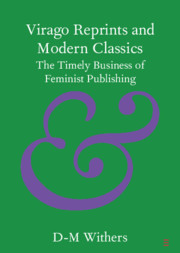Element contents
Virago Reprints and Modern Classics
Published online by Cambridge University Press: 29 April 2021
Summary
Information
- Type
- Element
- Information
- Online ISBN: 9781108884440Publisher: Cambridge University PressPrint publication: 20 May 2021
